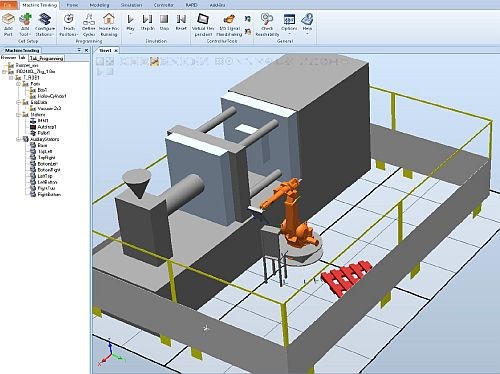Simulating Automation
Software designed for simulating and controlling machine-tending robots can help avoid collisions, protect equipment and simplify the setup of automated cells.
Share




ABB’s RobotStudio software enables the offline programming of robots.
When equipped with the Machine Tending PowerPac add-on, the system can simulate the complete tending cycle of a robotic cell.
Robotic cell automation has the potential to improve machine utilization, reduce costs, even increase worker safety—but only if the robots are set up and functioning properly. ABB Robotics has developed an add-on for its PC-based RobotStudio software that enables users to check the operation of a robotic cell before costly mistakes are made on the shop floor.
The Machine Tending PowerPac add-on is designed to help get a robotic cell up and running safely. The program includes a vast library of grippers and station types along with support for most machines and peripheral equipment. This data enables the system to realistically simulate, validate and optimize a robotic cell in the 3D virtual world before the system is put to work, even before the components are physically installed if necessary. According to the company, everything from cycle times to collision risks can be visualized through the software, improving productivity and preventing crashes.
Visit ABB’s website to learn more about its machine-tending software offerings.
Related Content
-
Studer's Automation, Entry-Level Solutions Take Center Stage
At its 2024 Music Motion Meeting, Studer AG showed off its entry-level line of grinding machines, as well as its newest universal loading system.
-
10 Robotic Solutions You Can Find at IMTS 2026
Discover how today’s robots and cobots are making it easier than ever to automate tasks, free up skilled workers, and run machines unattended – even in small and midsized shops.
-
Revolutionizing Production: How Smart Hydraulics Drive 24/7 Manufacturing Excellence
All World Machinery Supply helps a firearms manufacturer up its game and improve and increase output.

.jpg;width=70;height=70;mode=crop)

















